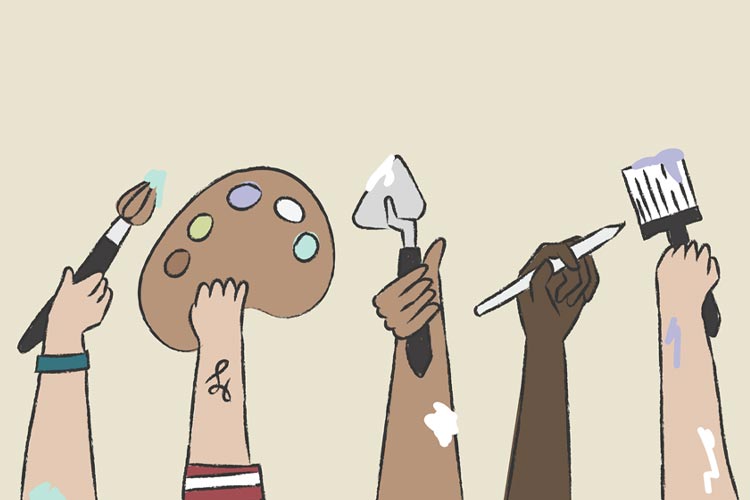Imagine a world stripped of its artistic essence, devoid of captivating melodies, poetic verses, and masterpieces that inspire the soul. Now envision the absence of mathematical marvels, precise calculations, and intricate patterns that form the foundation of our scientific understanding. In such a scenario, some argue that mathematics, unlike the arts, lacks the capacity for creativity. However, it can be firmly contended that this viewpoint is flawed and mathematics does not lack creativity. This essay will explore the creative realm of mathematics, highlighting its profound capacity for creativity through its problem-solving nature, the elegance of mathematical proofs, and its application in real-life scenarios.
Mathematics is a realm of endless problems waiting to be solved, requiring imaginative and innovative thinking. Mathematicians often encounter complex problems, necessitating the exploration of uncharted territories to find unique solutions. For example, in the late 20th century, the four-colour theorem posed a challenging problem in graph theory: Can any map be coloured with only four colours, such that no two adjacent regions share the same colour? Mathematicians Kenneth Appel and Wolfgang Haken developed extraordinary proof using innovative techniques, including computer-assisted methods, to demonstrate the validity of the theorem. This feat required creative problem-solving skills and an unconventional approach. Another example can be found in the field of optimization, where mathematicians apply creative thinking to maximize or minimize a given objective. In the realm of operations research, the travelling salesman problem serves as a classic illustration. This problem seeks the most efficient route for a salesman to visit a set of cities and return to the starting point. To find the optimal solution, various creative approaches, such as genetic algorithms and simulated annealing, have been employed, demonstrating the creativity required to tackle mathematical problems. Therefore, mathematics does not lack creativity because like arts it also requires imaginative and innovative thinking.
Mathematical proofs exhibit an inherent aesthetic appeal that rivals the aesthetics found in art forms. A well-crafted proof is akin to a symphony, harmoniously intertwining ideas, logic, and creativity. One notable example is Gödel’s incompleteness theorems, which shook the foundations of mathematics in the 20th century. Kurt Gödel’s proof ingeniously showed that any formal system of mathematics would either be incomplete or inconsistent. This ground-breaking result required creative thinking and a deep understanding of logic, showcasing the elegance and creative nature of mathematical proofs. Another captivating example lies in the field of fractal geometry, where mathematical objects exhibit intricate self-similarity and fascinating patterns. The Mandelbrot set, discovered by Benoit Mandelbrot, is a prime illustration. Its complex and infinitely detailed structure emerge from a simple iterative equation. Exploring the Mandelbrot set and its countless intricate features requires both mathematical rigour and artistic intuition, demonstrating the creative interplay between mathematics and aesthetics. Therefore, mathematics does not lack creativity because the aesthetic appeal of mathematical proofs is on par with that of artistic creations.
Mathematics transcends theoretical abstraction and finds practical applications in diverse fields, demonstrating its creative potential. Through its practical applications, mathematics not only solves real-world problems but also showcases its capacity for creativity. One compelling example of mathematics’ practical application is in the field of computer graphics. The creation of visually stunning computer-generated imagery (CGI) in movies and video games relies heavily on mathematical principles. From rendering realistic textures and lighting effects to simulating fluid dynamics and complex physics, mathematical algorithms play a vital role in bringing imaginative worlds to life. Another fascinating application of mathematics can be found in the field of financial modelling. Financial institutions and investors rely on mathematical models to make informed decisions about investments, risk management, and portfolio optimization. The Black-Scholes-Merton model, for instance, creatively combines mathematical concepts to determine the fair value of options and other derivatives. By applying creative mathematical modelling techniques, financial professionals can navigate complex financial landscapes and make strategic decisions. Therefore, mathematics lacks creativity is just a misconception, because it finds practical application in real-life scenarios.
Opponents may argue that mathematics is solely about logical reasoning and follows strict rules, leaving no room for creativity. However, this viewpoint fails to recognize that creativity in mathematics lies in the process of discovery, problem-solving strategies, and the elegance of mathematical proofs. It is not merely about subjective expression but about harnessing imagination to uncover new truths and solutions.
In conclusion, the claim that mathematics lacks creativity compared to the arts is misguided. Mathematics encompasses a creative realm that fosters problem-solving, exhibits beauty through elegant proofs, and finds practical applications in real-life scenarios. The creative nature of mathematics is evident in its profound impact on the world. As we acknowledge the artistic essence concealed within the realm of mathematics, we expand our perception of creativity and embrace its elegant solutions’ profound beauty.




